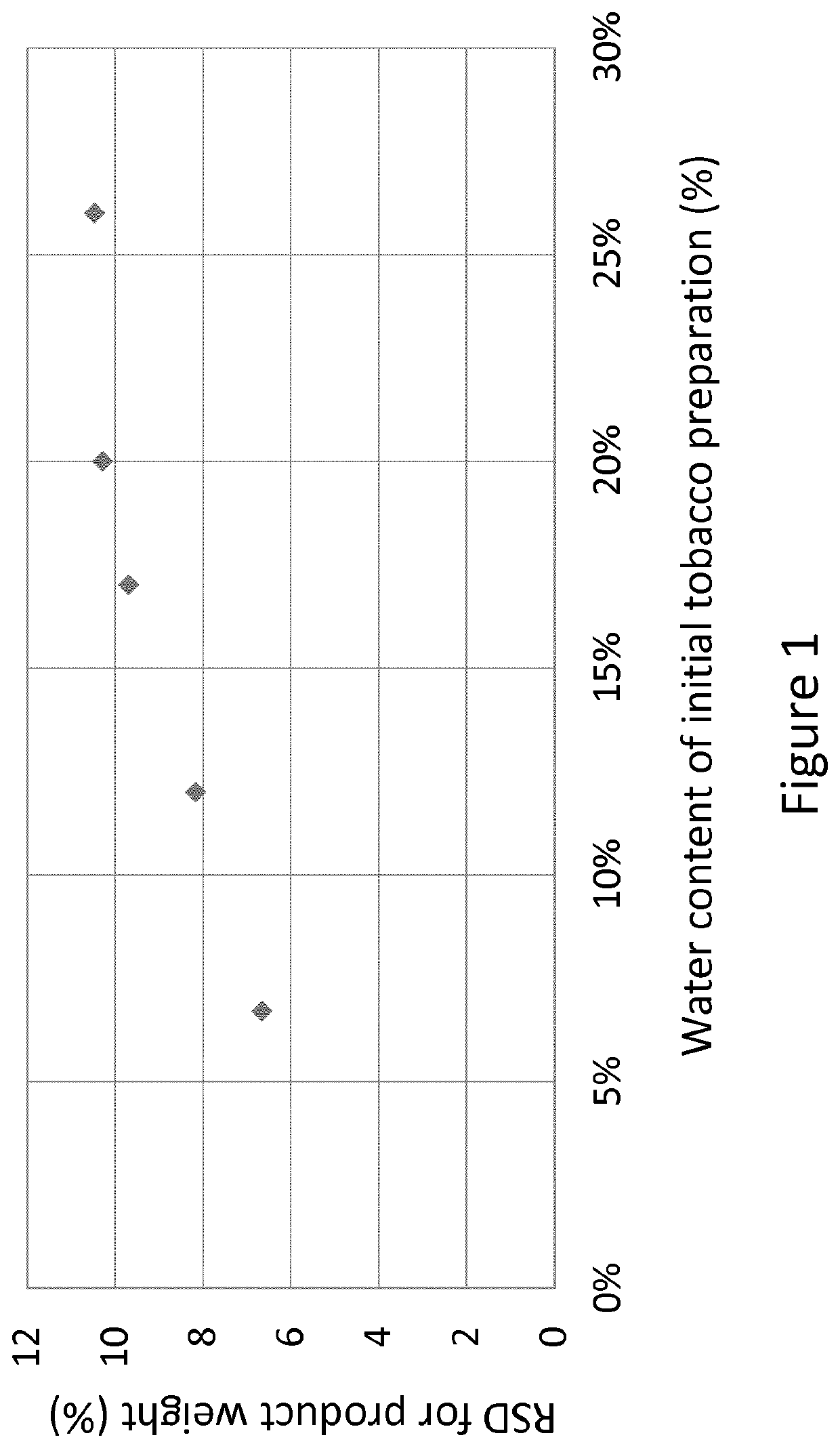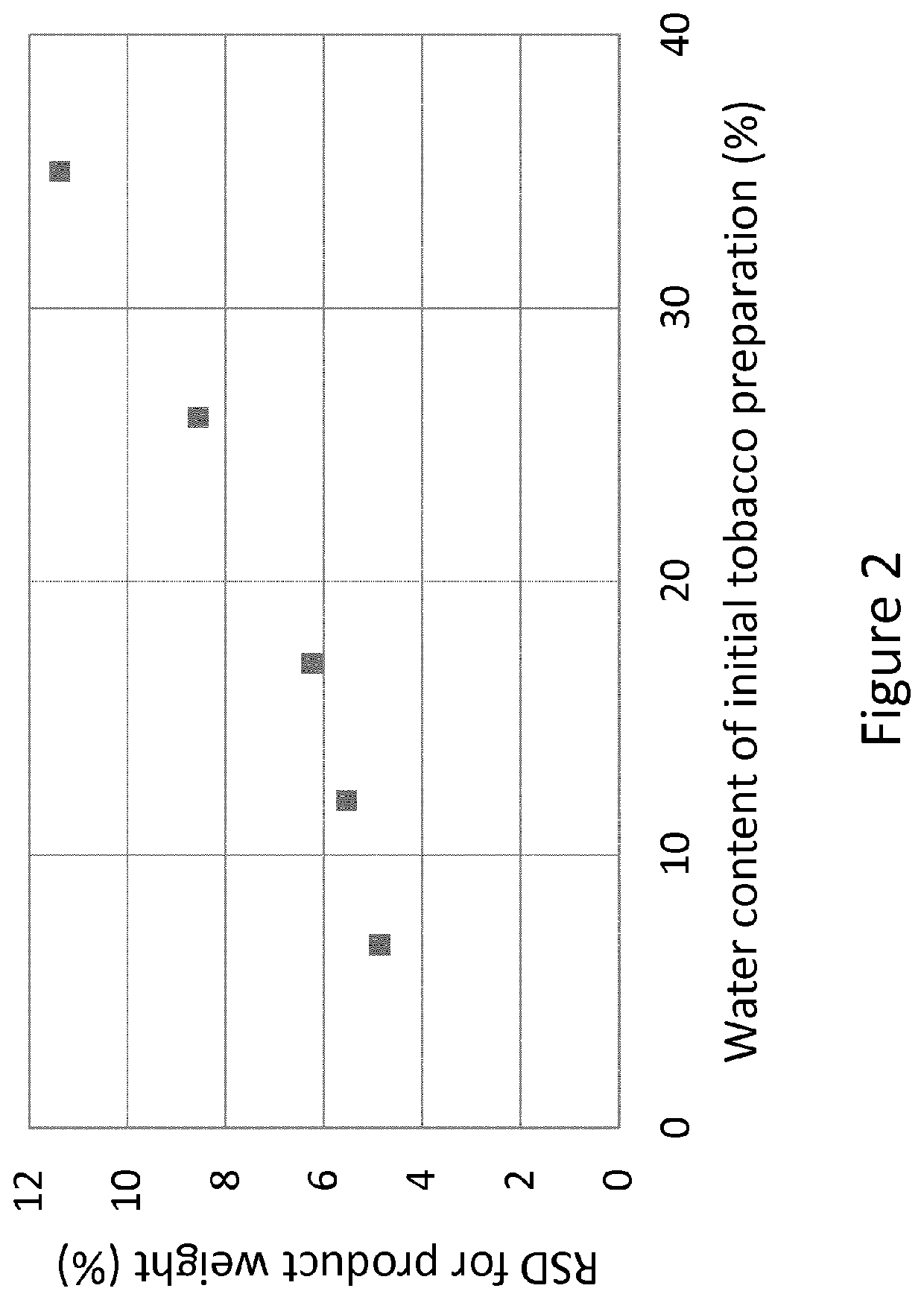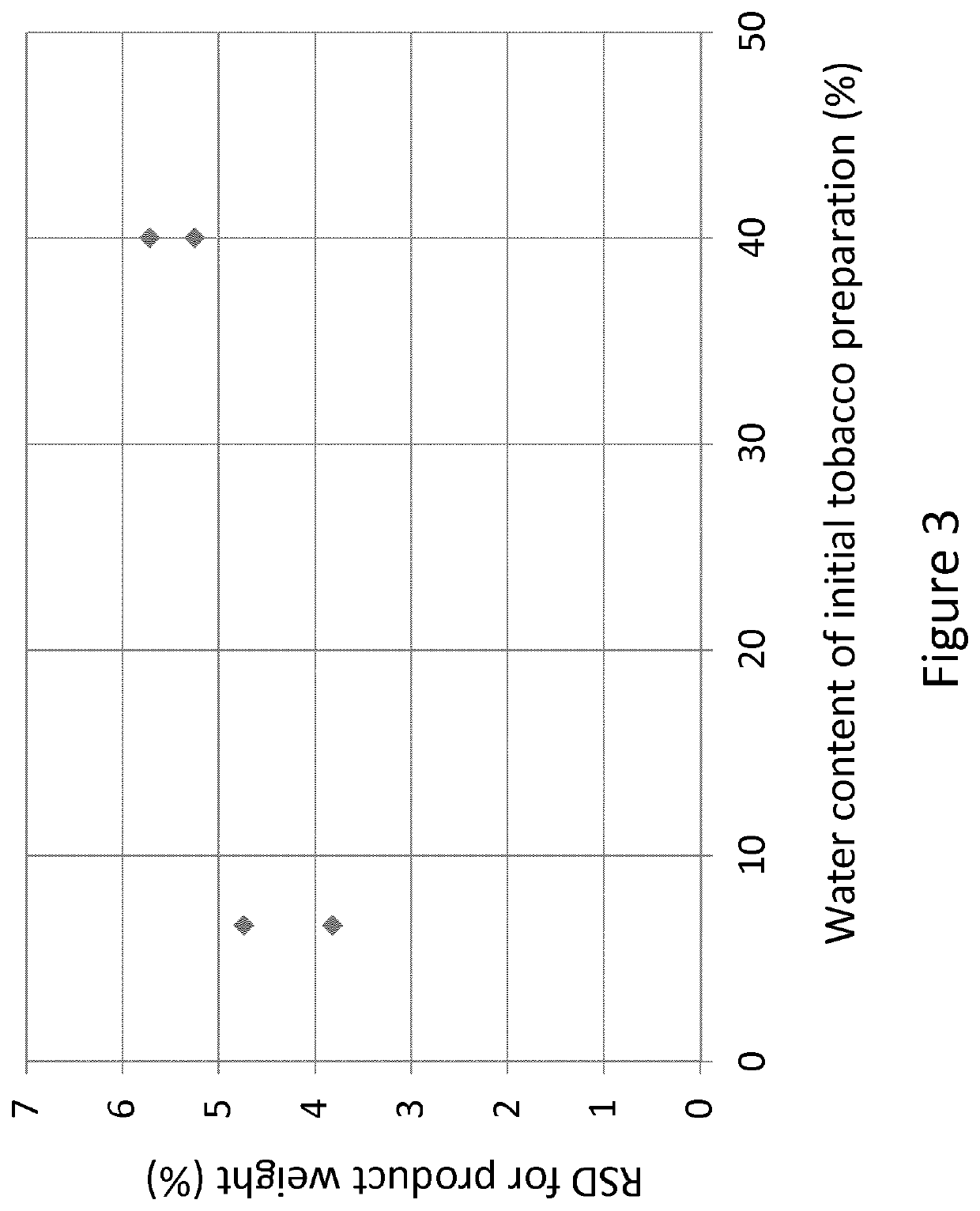Method for producing a pouched smokeless tobacco product comprising heat treatment
a smokeless tobacco and heat treatment technology, applied in the field of pouched smokeless tobacco products, can solve the problems of difficult portion-packed snus, difficulty in rheological properties, and difficulty in obtaining snus, so as to improve rheological properties, improve flow properties, and facilitate handling and transportation.
- Summary
- Abstract
- Description
- Claims
- Application Information
AI Technical Summary
Benefits of technology
Problems solved by technology
Method used
Image
Examples
example 1
Impact of Water Content of Initial Tobacco Preparation on Weight Variance of Pouched Smokeless Tobacco Products Packed with Merz SB 53-2 / T Pouch Packer Machine
[0134]Smokeless tobacco compositions suitable for pouch packing using Merz SB 53-2 / T pouch packer were made according to GothiaTek® standard containing the ingredients as specified in Table 1.1.
[0135]
TABLE 1.1Ingredients of smokeless tobacco compositionwt %Tobacco flour (containing lamina and stem), dry weight58.1Water content33.0Sodium chloride (NaCl)5.8Sodium carbonate (Na2CO3)3.1
The moisture content of the composition given in Table 1.1 is about 33% w / w.
a) Heat Treatment of Initial Tobacco Preparation
[0136]First, five initial tobacco preparations containing tobacco flour, added sodium chloride and different amounts of moisture (including moisture contained in the tobacco flour and, where applicable, water added to the tobacco flour), as specified in Table 1.2, were prepared. The initial tobacco preparations contained all th...
example 2
Impact of Water Content of Initial Tobacco Preparation on the Weight Variance of Pouched Smokeless Tobacco Products Packed with a Pouch Packer Machine in Accordance with NYPS Technology
[0145]Smokeless tobacco compositions suitable for pouch packing using the NYPS technology were made according to GothiaTek® standard containing the following ingredients specified in Table 2.1.
[0146]
TABLE 2.1Ingredients of smokeless tobacco compositionwt %Tobacco flour (containing lamina and stem), dry weight46.8Water content41.8Sodium chloride (NaCl)4.7Propylene glycol4.2Sodium carbonate (Na2CO3)2.5
The moisture content of the composition given in Table 2.1 is about 46% w / w.
a) Heat treatment of Initial Tobacco Preparation
[0147]First, five initial tobacco preparations containing tobacco flour, sodium chloride and different amounts of water (including moisture contained in the tobacco flour and, where applicable, water added to the tobacco flour), as specified in Table 2.2, were prepared. The initial to...
example 3
Impact of Water Content of Initial Tobacco Preparation on the Weight Variance of Pouched Smokeless Tobacco Products Packed with a Pouch Packer Machine in Accordance with NYPS Technology
[0157]Smokeless tobacco compositions suitable for pouch packing using the NYPS technology were made according to GothiaTek® standard containing the following ingredients specified in Table 3.1.
[0158]
TABLE 3.1Ingredients of smokeless tobacco compositionwt %Tobacco flour (containing lamina and stem), dry37.9weightWater content52.5Sodium chloride (NaCl)4.2Propylene glycol3.5Sodium carbonate (Na2CO3)1.9
The moisture content of the composition given in Table 3.1 is about 56% w / w.
a) Heat Treatment of Initial Tobacco Preparation
[0159]First, four initial tobacco preparations containing tobacco flour, sodium chloride and different amounts of water (including moisture contained in the tobacco flour and, where applicable, water added to the tobacco flour) as specified in Table 3.2, were prepared. The initial toba...
PUM
 Login to View More
Login to View More Abstract
Description
Claims
Application Information
 Login to View More
Login to View More - R&D
- Intellectual Property
- Life Sciences
- Materials
- Tech Scout
- Unparalleled Data Quality
- Higher Quality Content
- 60% Fewer Hallucinations
Browse by: Latest US Patents, China's latest patents, Technical Efficacy Thesaurus, Application Domain, Technology Topic, Popular Technical Reports.
© 2025 PatSnap. All rights reserved.Legal|Privacy policy|Modern Slavery Act Transparency Statement|Sitemap|About US| Contact US: help@patsnap.com



